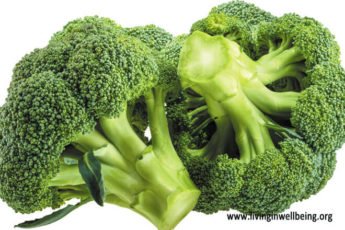
The problem of adolescence is by no means an easy topic to discuss notwithstanding that it is so to speak an every day thing. It is often said that the teenage years are the “best years of ones life”, In fact Art Linkletter a Canadian born US broadcaster in his book A Childs garden of Misinformation highlighted the beauty of the adolescent years in this famous quote; The four stages of man are infancy, childhood, adolescence, and obsolescence, in his opinion, life became useless after adolescence. As true as these assertions may be, it is ironic to note that this is only part of the picture. Life for many adolescents is a painful tug of war filled with mixed messages and conflicting demands from parents, teachers, friends, family and oneself. Growing up—negotiating a path between independence and reliance on others—is a tough business and that summarizes what we would be discussing here today.
Adolescence (gotten from the latin word adolescere which means; to grow) as defined by the Wikipedia online encyclopedia, is a transitional stage of physical and mental human development that occurs between childhood and adulthood. This transition involves biological (i.e. pubertal), social, and psychological changes, though the biological or physiological ones are the easiest to measure objectively.
The onset of adolescence and the beginning of adulthood vary from country to country but we can generally place adolescents to be persons within the ages of eight and eighteen. NB, Those in the period of adolescence are referred to as adolescents or teenagers or simply as teens.
The period of Adolescence is filled with intellectual and emotional changes in addition to other major biological and physical changes. It is a time of discovery of self and one’s relationship to the world around himself or herself.
Before we delve into the problems of adolescence, let us take some time to note the causes. It is important to the success of our discourse that we first understand what is happening to the teen physically, cognitively, and socially; before looking at how these affects teens.
Physical Development: During adolescence, teens experience rapid physical development at a speed unparalleled since infancy. Physical development includes; rapid increase in height and weight (seen earlier in girls than in boys), the development of secondary sexual characteristics (prominent among which is the onset of menstruation in girls and the growth of pubic hair),a continued brain development.
Cognitive Development: Adolescents usually possess greater thinking skills than infants. These advances in reasoning can be seen in the following areas;
• Developing advanced reasoning skills. These include the ability to think about multiple options and possibilities. It includes a more logical thought process and the ability to think about things hypothetically. It involves asking and answering the question, “what if…?”.
• Developing abstract thinking skills. These means thinking about things that cannot be seen, heard, or touched. Examples include things like faith, trust, beliefs and spirituality.
• Developing the ability to think about thinking in a process known as “meta-cognition.” Meta-cognition allows individuals to think about how they feel and what they are thinking. It involves being able to think about how one is perceived by others. It can also be used to develop strategies, also known as mnemonic devices, for improving learning.
Psycho-Social Development: There are five recognized psychosocial issues that teens deal with during their adolescent years. These include:
• Establishing an identity.
• Establishing autonomy.
• Establishing intimacy.
• Becoming comfortable with one’s sexuality.
• Making achievement.
These issues bring about such changes in youths as; spending more time with their friends than with their family, keeping a diary, locking up their rooms, become involved in multiple hobbies, become more argumentative, would not want to be seen with their parents in public etc.
As a result of these changes which the teen is undergoing, they become vulnerable to many forms of trouble. As adolescents try new behaviors, they become vulnerable to injury, legal consequences, and sexually transmitted diseases, unwanted pregnancies, traumatic injuries, particularly from car and motorcycle accidents, etc.
We shall then proceed to discuss some of these problems.
BEHAVIOURAL PROBLEMS
Adolescence is a time for developing independence. Typically, adolescents exercise their independence by questioning their parents’ rules, which at times leads to rule breaking. It is common for once loyal children to begin to grumble when asked to carry out some chores at home and to respond in harsh words when been rebuked by their parents. This is often a challenging time for most parents.
Some parents and their adolescents clash over almost everything. In these situations, the core issue is really control—adolescents want to feel in control of their lives and parents want adolescents to know they still make the rules.
Children occasionally engage in physical confrontation. However, during adolescence, the frequency and severity of violent interactions increase. Although episodes of violence at school are highly publicized, adolescents are much more likely to be involved with violence (or more often the threat of violence) at home and outside of school. Many factors, including developmental issues, gang membership, access to weapons, substance use, and poverty, contribute to an increased risk of violence for adolescents. Of particular concern are adolescents who, in an altercation, cause serious injury or use a weapon.
Because adolescents are much more independent and mobile than they were as children, they are often out of the direct physical control of adults. In these circumstances, adolescents’ behavior is determined by their own moral and behavioral code. The parents guide rather than directly control the adolescents’ actions. Adolescents who feel warmth and support from their parents are less likely to engage in risky behaviors. Also, parents who convey clear expectations regarding their adolescents’ behavior and who demonstrate consistent limit setting and monitoring are less likely to have adolescents who engage in risky behaviors. Authoritative parenting, as opposed to harsh or permissive parenting, is most likely to promote mature behaviors.
Substance abuse is a common trigger of behavioral problems and often requires specific therapy. Behavioral problems may be the first sign of depression or other mental health disorders. Such disorders typically require treatment with drugs as well as counseling. In extreme cases, some adolescents may also need legal intervention in the form of probation which is not so common in Nigeria.
UNWANTED PREGNANCY AND SEXUALLY TRANSMITTED DISEASES (STDS)
This is as much a problem for the male adolescent as it is for the female but generally, the girls stand a greater risk of this. Due to the development of secondary sexual characteristics following adolescence, teens feel a great push to explore and experiment with their bodies. Early maturing girls are likely to start dating and a combination of the overwhelming urge to explore and peer pressure leads many into sex.
Teens often equate intimacy with sex. Rather than exploring a deep emotional attachment first, teens tend to assume that if they engage in the physical act, the emotional attachment will follow
Most sexually active adolescents are not fully informed about contraception, pregnancy, and sexually transmitted diseases, including human immunodeficiency virus (HIV) infection. As a result, many fall victims of unwanted pregnancies as well as STD’s. This we must note has destroyed so many young promising teens even from very good homes.
Because adolescence is a transitional stage in life, pregnancy can add significant emotional stress. Pregnant adolescents and their partners tend to drop out of school or job training, thus worsening their economic status, lowering their self-esteem, and straining personal relationships. Some of them never get to fulfill their childhood dreams in life.
Pregnant adolescents, particularly the very young and those who are not receiving prenatal care, are more likely than women in their 20s to have medical problems such as anemia and toxemia. Infants of young mothers (especially mothers younger than 15 years) are more likely to be born prematurely and to have a low birth weight. Also there is the problem of Vesico vaginal fistula (VVF).
Most times, pregnant teens attempt abortion, but this does not remove the psychological problems of an unwanted pregnancy—either for the adolescent girl or her partner. Really, it leads to more psychological and medical problems and the church has very strong words against abortion.
Parents may have different reactions when their daughter says she is pregnant or their son says his girlfriend is pregnant. Emotions may range from apathy to disappointment and anger. It is important for parents to express their support and willingness to help the adolescent sort through his or her choices. Parents and adolescents need to communicate openly about sex, contraception, abortion, adoption, and parenthood which are all tough options for the adolescent to struggle with alone.
DRUG AND SUBSTANCE ABUSE
Substance use among adolescents occurs on a spectrum; from experimentation to dependence. Experimentation with alcohol and drugs during adolescence is common. Unfortunately, teenagers often don’t see the link between their actions today and the consequences tomorrow. They also have a tendency to feel indestructible and immune to the problems that others experience.
Alcohol is the biggest culprit in this regard. Teens have access to it at parties, can obtain it from older friends who are of legal age to buy it, or may simply raid their parents’ liquor cabinets. Moreover, unlike drug use, the moderate use of alcohol is considered perfectly acceptable in most adult social circles. Teens see their parents enjoying a cocktail after work or having a glass of wine at dinner. Drinking comes to represent a very sophisticated and adult thing to do, after all, mum and Dad do it…why shouldn’t I?
Using alcohol and tobacco at a young age has negative health effects. While some teens will experiment and stop, or continue to use occasionally, without significant problems. Others will develop a dependency, moving on to more dangerous drugs and causing significant harm to themselves and possibly others.
Teenagers at risk for developing serious alcohol and drug problems include those: with a family history of substance abuse , those who are depressed , those who have low self-esteem, and who feel like they don’t fit in or are out of the mainstream.
The majority of adults who smoke cigarettes begin smoking during adolescence. If an adolescent reaches the age of 18 to 19 years without becoming a smoker, it is highly unlikely that he will become a smoker as an adult. An estimated 20 million adults in the United States abuse alcohol. More than half of these alcoholics started drinking heavily when they were teenagers.
Teenagers abuse a variety of drugs, both legal and illegal. Legally available drugs include alcohol, prescribed medications, inhalants (fumes from glues, aerosols, and solvents) and over-the-counter cough, cold, sleep, and diet medications. The most commonly used illegal drugs are marijuana (pot), stimulants (cocaine, crack, and speed), opiates, heroin, and designer drugs (Ecstasy).
Drug use is associated with a variety of negative consequences, including increased risk of serious drug use later in life, school failure, and poor judgment which may put teens at risk for accidents, violence, unplanned and unsafe sex, crime and suicide.
Article Source: http://nzesylva.wordpress.com/2008/08/25/the-problem-of-adolescence/












